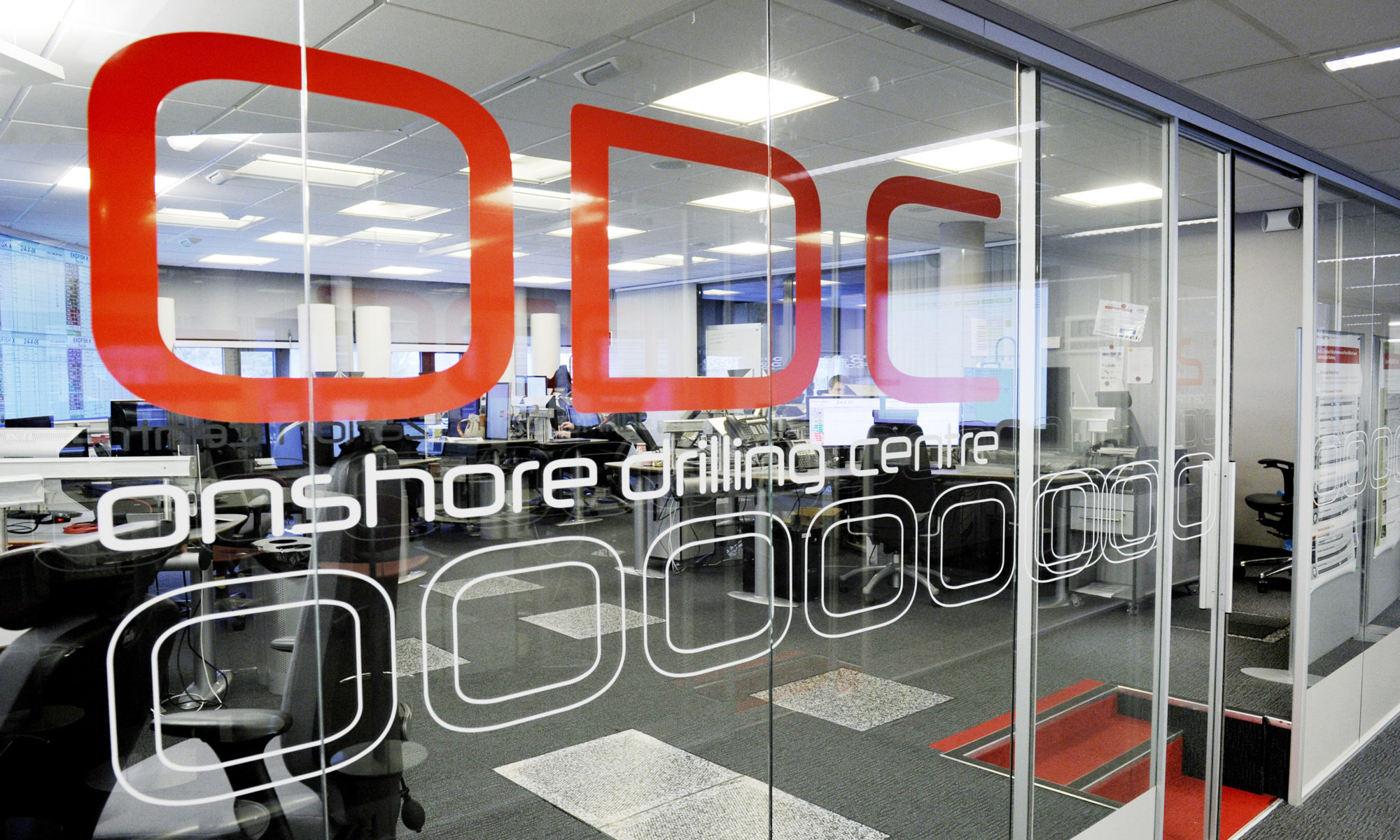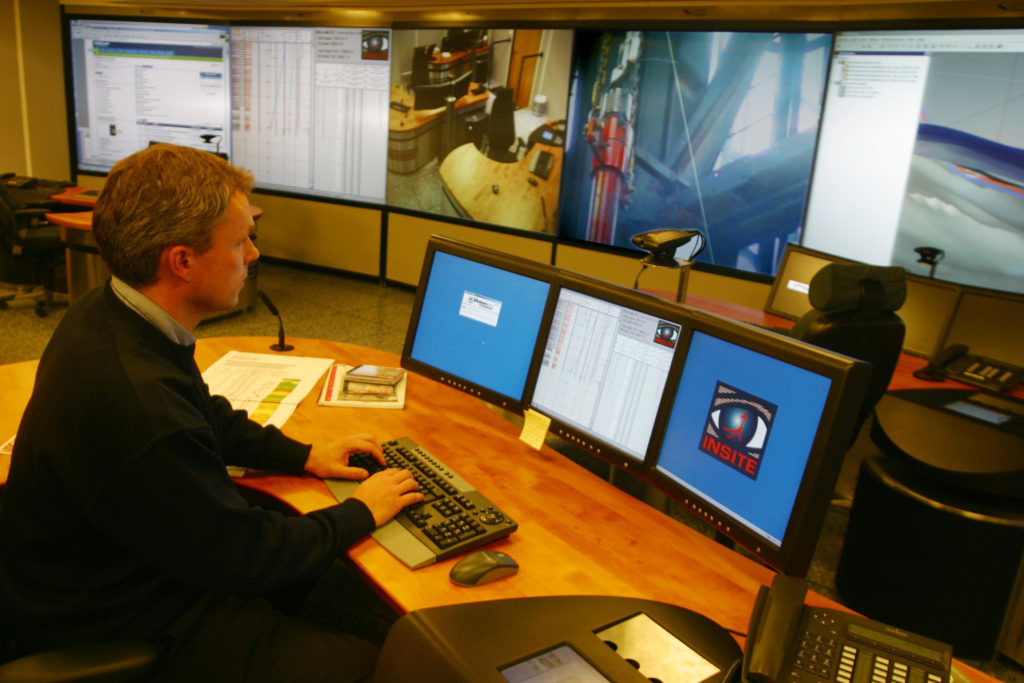New drilling centre and integrated operations

The first facility of its kind in Norway, this could monitor and operate offshore drilling processes in real time. Advanced technology allowed operators and engineers on land to pursue activities which were previously only possible on the platform.
Initially connected to Ekofisk 2/4 A in order to assist with drilling operations there, it was rapidly extended to cover the rest of the Greater Ekofisk Area.
The ODC contained advanced solutions which were to contribute to safer operations because the company could utilise available expertise on land during drilling.
When a particular problem arose in relation to well, drilling or reservoir work, a specialist no longer had to fly offshore – with half their time taken up by transport and logistics.
Such experts could now join a cross-disciplinary team made up of people both on land and on the platform. Geologists, geophysicists, reservoir and drilling engineers, and other disciplines could be assembled.
Thanks to the fibreoptic cable linking field and office, personnel on the platform and ashore could all view the same images on big screens.[REMOVE]Fotnote: Lysgård, Magnus, Vil en rotasjonsordning med hurtigrotasjon bedre forutsetningene for å lykkes med integrerte operasjoner i oljeindustrien? – En casestudie av ConocoPhillips Onshore Operation Center, MSc thesis, University of Stavanger, 2015. Downloaded from https://docplayer.me/55107889-Det-teknisk-naturvitenskapelige-fakultet-masteroppgave-magnus-lysgard.html.
The new centre cost NOK 30 million to build, and the savings were huge. Calculations showed that it had paid for itself after only seven months in operation.[REMOVE]Fotnote: Rosenberg, Ulf-E, “Ekofisk-området går fra Flintstones til spaceworld”, Stavanger Aftenblad, 28 November 2003.
Other operations centres

Experience with the ODC was so good that ConocoPhillips quickly established around 20 of these facilities, covering such areas as production, optimisation, well monitoring and logistics.
They contributed to secure and efficient collaboration across physical distances and other barriers. One example was the logistics centre, where all work with sea and air transport, spatial organisation offshore and the like was concentrated.
This facility helped to increase utilisation of available resources, reduced transport costs and cut CO2 emissions.[REMOVE]Fotnote: ConocoPhillips, “Samhandling”. Downloaded from http://www.conocophillips.no/nn/vare-norske-operasjoner/integrerte-operasjoner/samhandling/. The result was fewer helicopter flights and less use of offshore beds.
Another example was the onshore operation centre (OOC), which supported the control rooms on the platforms and functioned as a link between them and the discipline teams on land.
Integrated operations

Establishing the ODC kicked off the company’s new operating model, based on integrated operations. This described how results were to be achieved by integrating people through collaboration and work processes enabled by technology,
This was a matter of combining activities, linking assignments together and working as a team. To encourage efficiency and sustainable solutions, the model included methods, tools and structures designed to ensure continuous improvement.
The goal of integrated operations – also known as e-operations or smart operations – is to make decisions safer, better and faster.
Government enthusiastic
The Norwegian authorities quickly saw the value of the new ConocoPhillips drilling centre and operating model. White Paper no 38 from 2004 commented as follows on the company’s innovation:
A specific example of utilising e-operation is the drilling centre established by ConocoPhillips in Tanager … [The company] estimates that it has saved about NOK 60 million in less than a year through its drilling centre. These savings are primarily achieved by more effective decisions and the transfer of certain functions to land. In addition to cheaper wells, improved well paths and fewer dry wells are achieved.[REMOVE]Fotnote: Minister of Petroleum and Energy, Om petroleumsvirksomheten, Report no 38 (2003-2004) to the Storting. Downloaded from https://www.regjeringen.no/no/dokumenter/Stmeld-nr-38-2003-2004-/id404848/sec3?q=e-drift#match_20.
The government was concerned at the time over the high level of costs in the Norwegian petroleum sector. It viewed the Tananger facility as a possible way to cut these, while also increasing production, extending the producing life of fields and thereby maintaining jobs.



Figures from the Norwegian Oil Industry Association (OLF) referenced in the White Paper assessed the potential offered by integrated operations.
This included an eight to 10 per cent rise in production, a four-five per cent improvement in recovery factors and a reduction as large as 30 per cent in operating costs.
The government wanted to see the new technology demonstrated by ConocoPhillips adopted elsewhere in the petroleum industry. Its White Paper aimed help realise the opportunities for greater value creation provided by integrated operations.
Most operator companies eventually implemented this approach as a strategic tool for achieving safe, reliable and efficient operations.
Each company had its own definition of what constituted such operations. But the common denominators were an emphasis on closer collaboration between land and offshore organisations, and amending work processes with the aid of technology.
Earthquake hits EkofiskNew IOR research centre
Interesting analysis! It’s amazing how patterns emerge even in seemingly random events. Sometimes a quick mental break is all you need – I’ve been enjoying a bit of solitaire bliss lately to unwind! Great post.